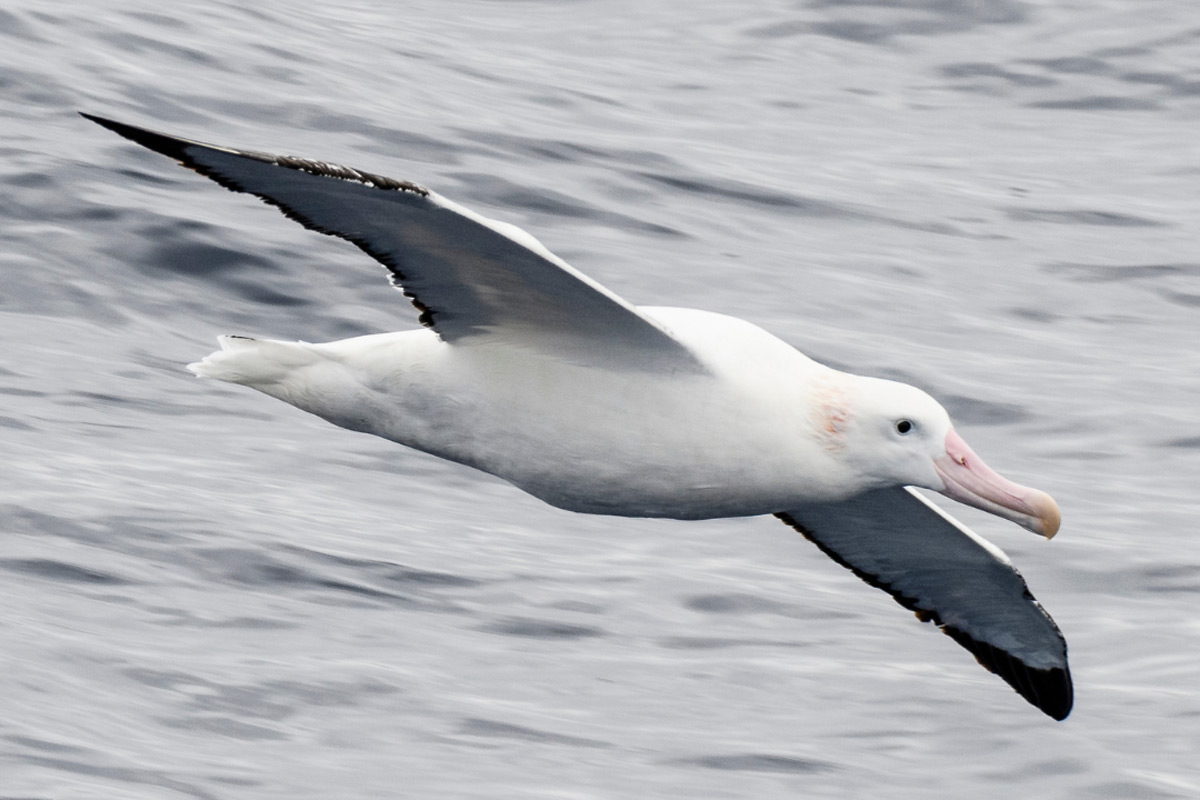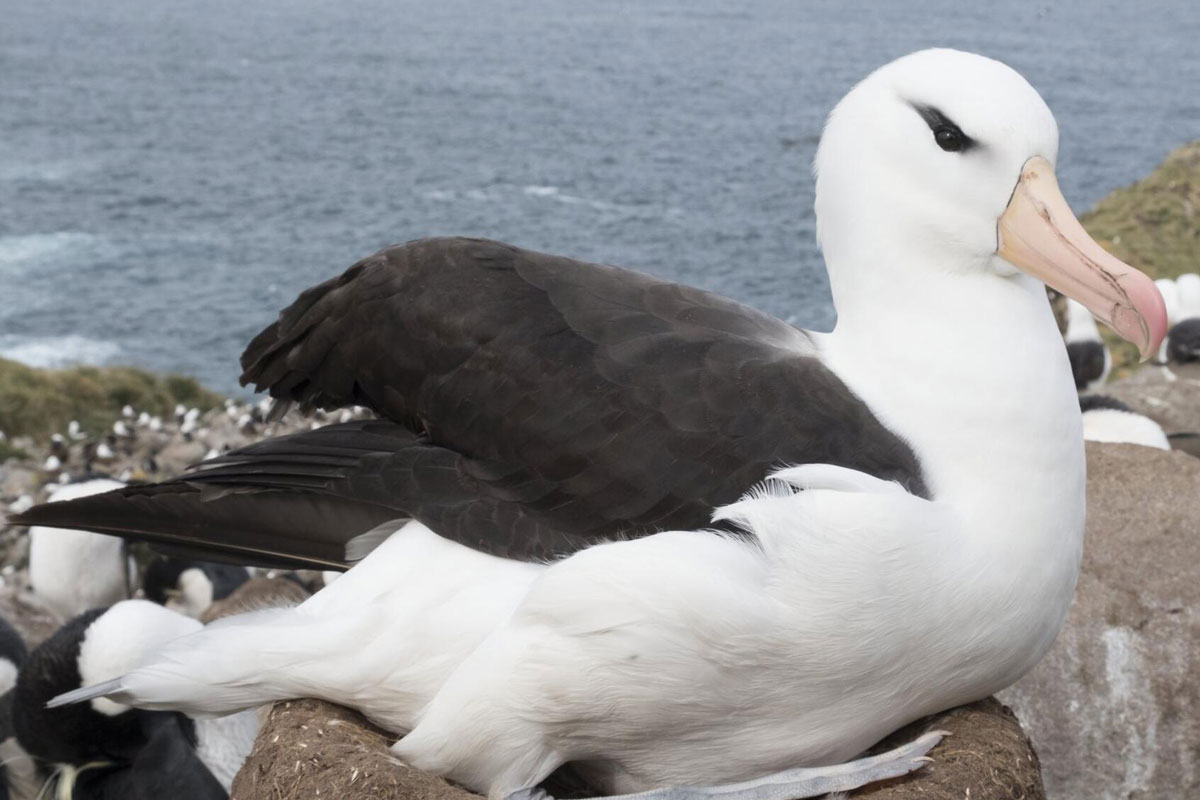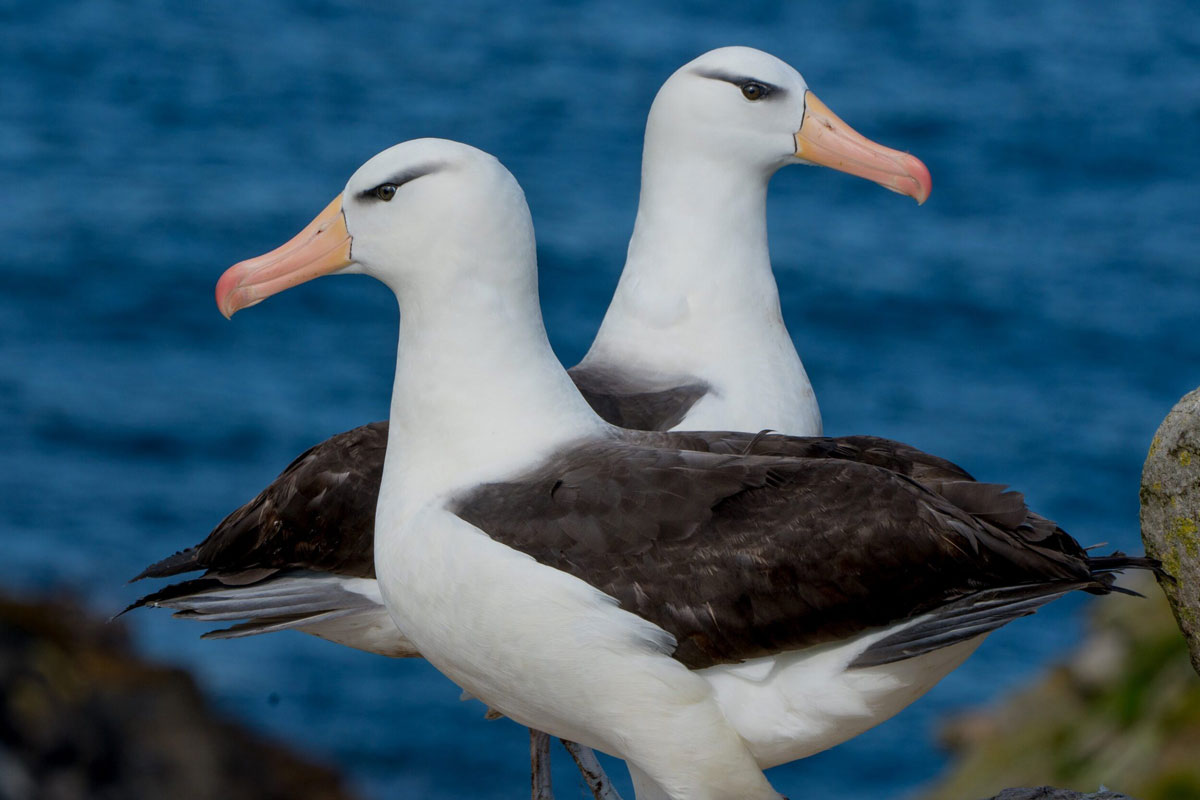8 Interesting Facts About Albatross
What does the word ‘albatross’ mean to you? If you golf, you may be familiar with the term as it means you are three under par on a hole. The word is also famously used to describe an unbearable burden in much poetry and folklore. But to us, albatross are incredible birds we often encounter on our voyages in Antarctica.
In honour of World Albatross Day on June 19th, let’s take a look at some of the most fascinating facts about these birds!

Wandering Albatross flying over the sea
1. They Have the Largest Wingspan of Any Bird
Arguably, what they are most famous for is their incredible wingspans, and the Wandering Albatross can measure a wingspan between 2.5 – 3.5 m (8-11 ft) from tip to tip.
2. They Can Coast for Several Miles in Just a Single Flap
This remarkable feat is accomplished by riding ocean winds. Albatross catch skyward drafts to carry them along, and once their wings are fully extended, they have a tendon that locks them in place, so no energy is spent to keep them outstretched. No other flying creature can match the distance traveled by an albatross without beating its wings.
3. They Can Live To Be Over 60 Years Old
Albatross are known to live well into their sixties, even reaching up to seventy years old. Scientists were baffled to discover a 74-year-old bird that was still laying eggs and raising chicks. Her name is Wisdom, a Laysan albatross, located in Midway Atoll National Wildlife Refuge, a sanctuary in an island in Hawaii. This species usually lives between 12 and 40 years, so seeing this female live to this age and still lay eggs was really a surprise and prompted biologists to investigate the reasons behind this spectacular phenomenon.
4. They Mate for Life
These great birds seek out a life partner with the use of a ritualized dance. Once they have chosen their life partner they remain together until death, which means pairs can form unions for 50 years or longer. As romantic as that sounds, they aren’t strictly monogamous.
5. They Spend 80% of Their Lives at Sea
Albatrosses only visit land to breed and care for their chicks. This makes them very rare to see – even when nesting, they prefer remote islands. Fortunately, we know the sites of a few colonies! Places such as the Falkland Islands, South Shetland Islands, Antarctic Peninsula, and South Georgia are some of our highlight destinations where you might spot one of the 22 different species of albatross that are out there!

Their chick can only fly and live independently after reaching over a year of age.
6. They Have the Longest Incubation Period of Any Bird
The wandering albatross has the longest incubation period of any species. It typically takes 78-79 days. In general, this animal lays just one single egg every two years, and surprisingly, that egg has the longest incubation period of any bird. The male and female take turns feeding and guarding their chicks until they are large enough to care for themselves.

Pair of Black Browed Albatross
7. They Can Excrete Salt Through a Special Gland Above Their Eyes
The salt travels through their bloodstream and is then excreted through a special gland above their eyes.
8. They Are a Sign of Both Good and Bad Luck
There are many myths around albatross for sailors. It’s been said that shooting, killing, and eating an albatross would bring bad luck (though they were often on the menu for explorers out at sea in their ships). It is also believed that seeing one fly overhead could mean that the soul of a lost sailor was there to protect them or bring needed winds for the ship’s sails. However, it could also mean someone’s imminent death or a coming storm.
Experience the many species of albatross and travel alongside our expert ornithologists
Speak to your preferred agent or contact us to book your adventure today.
